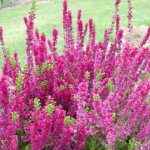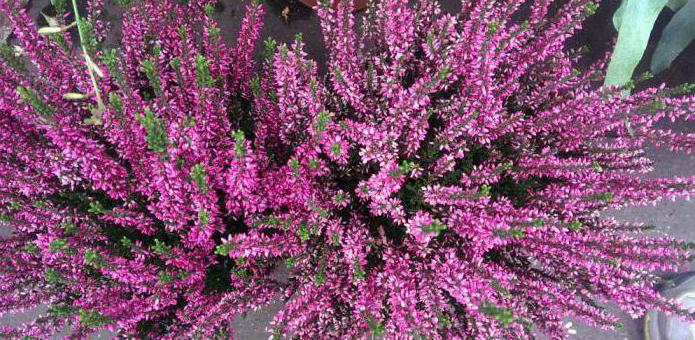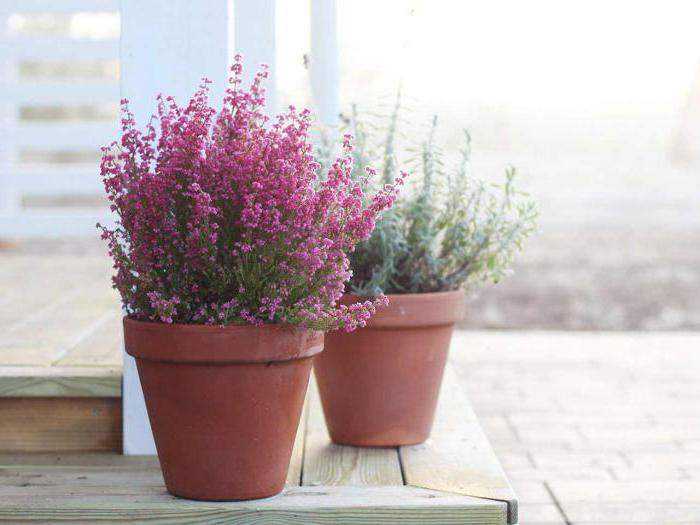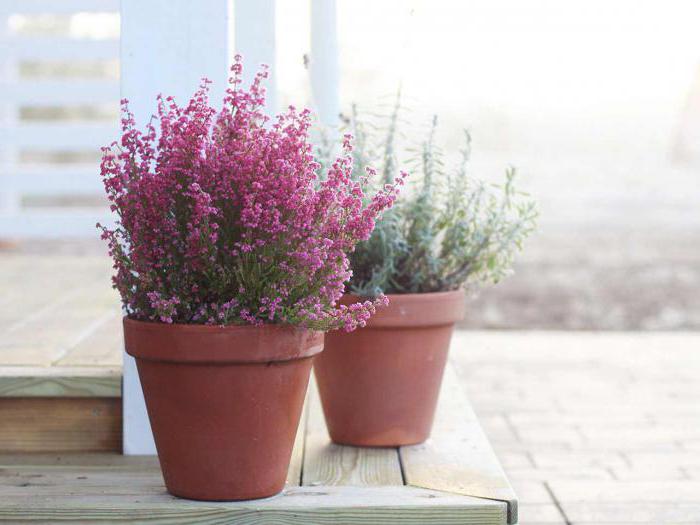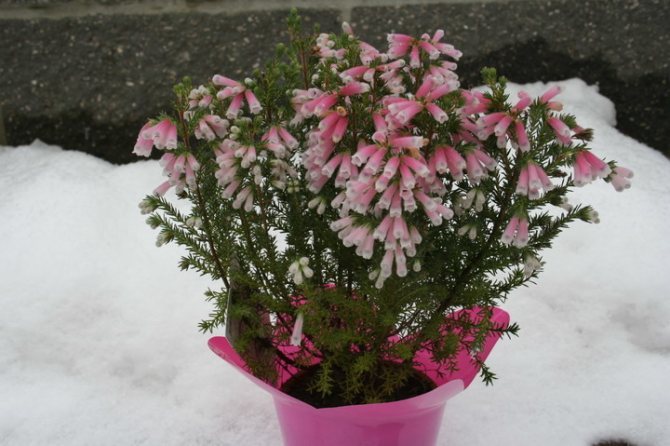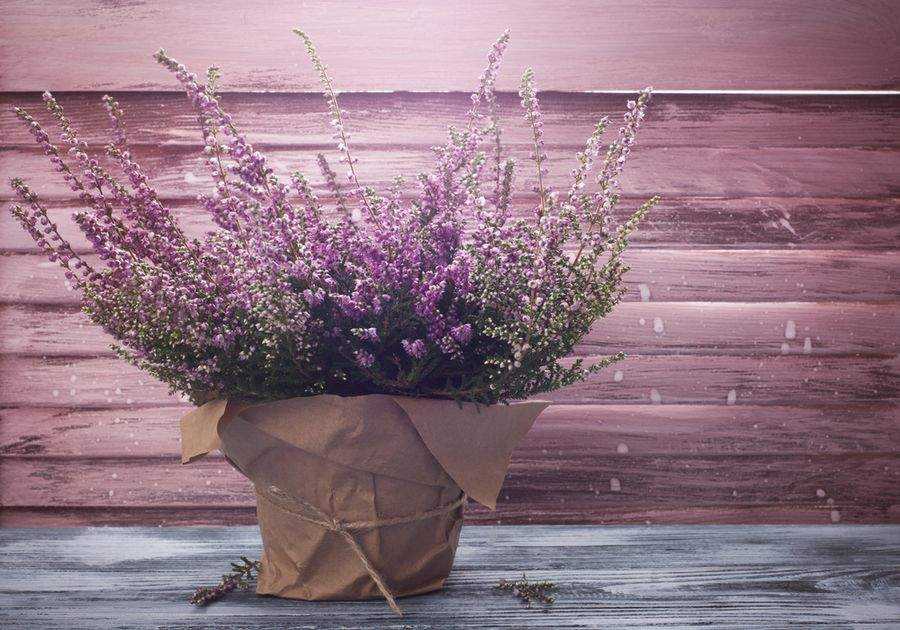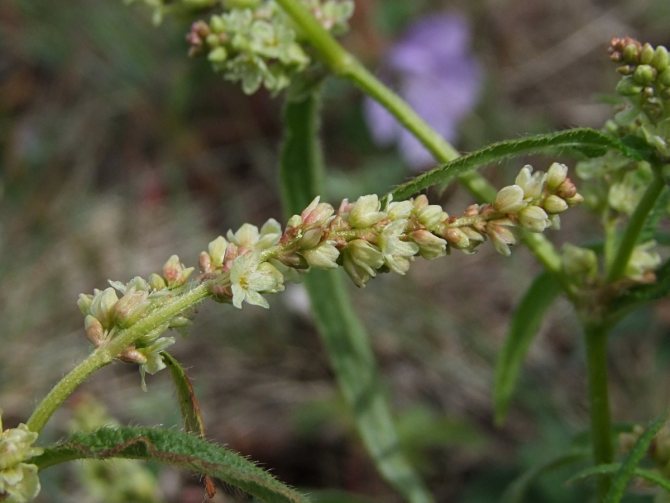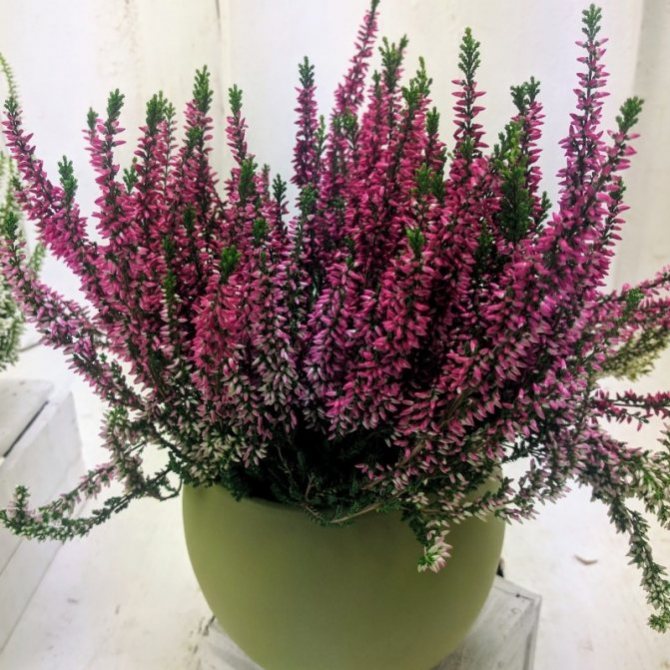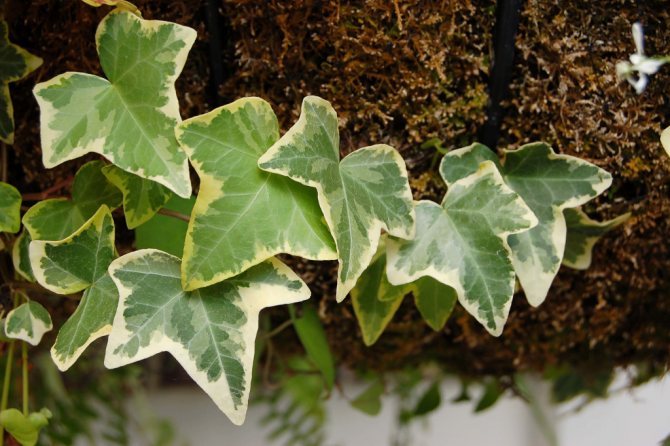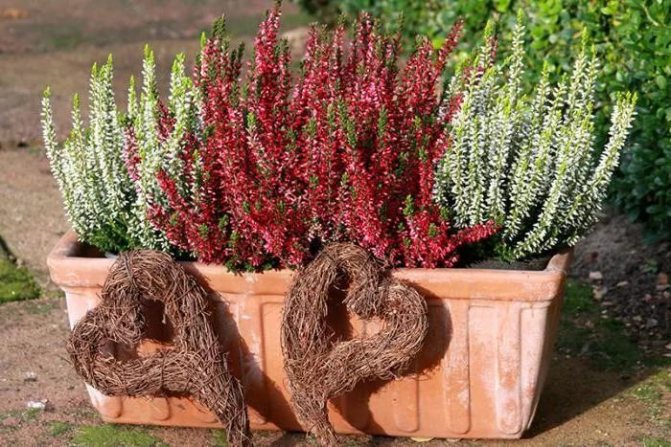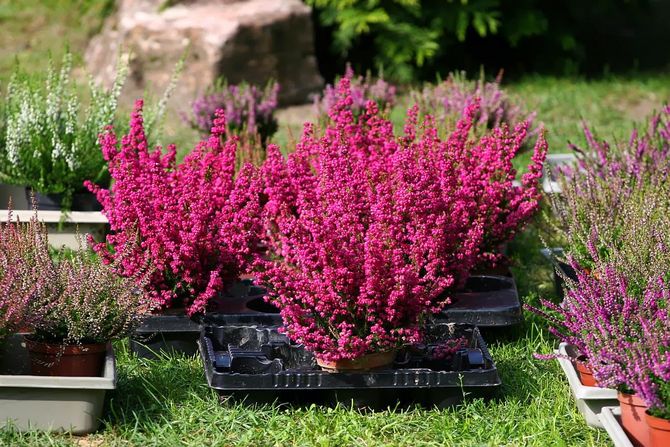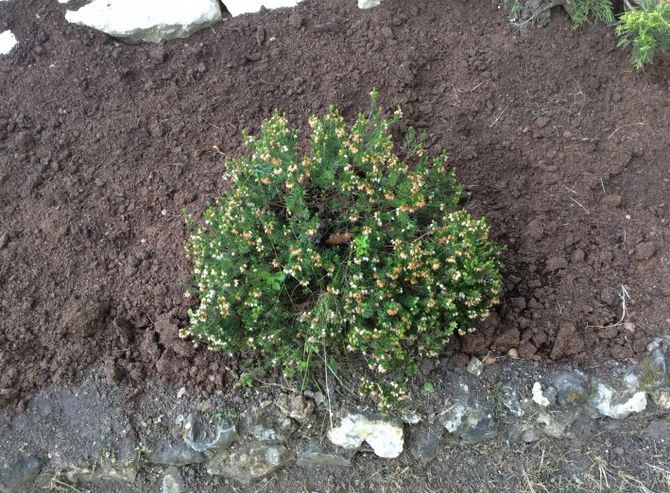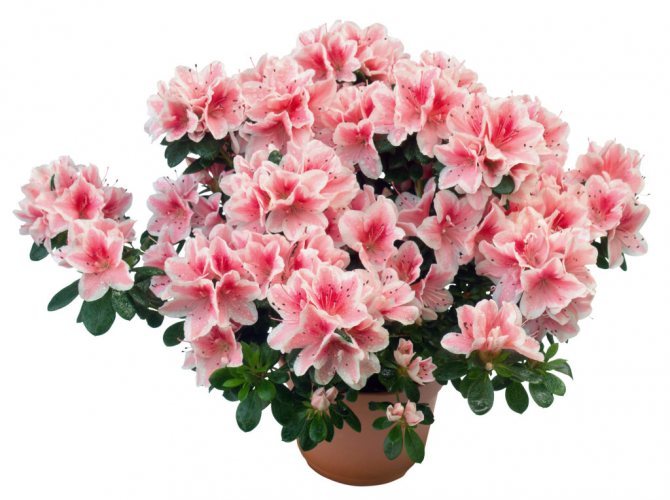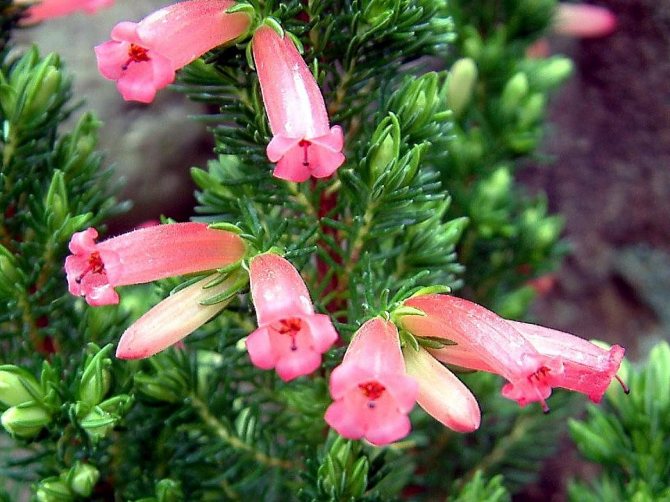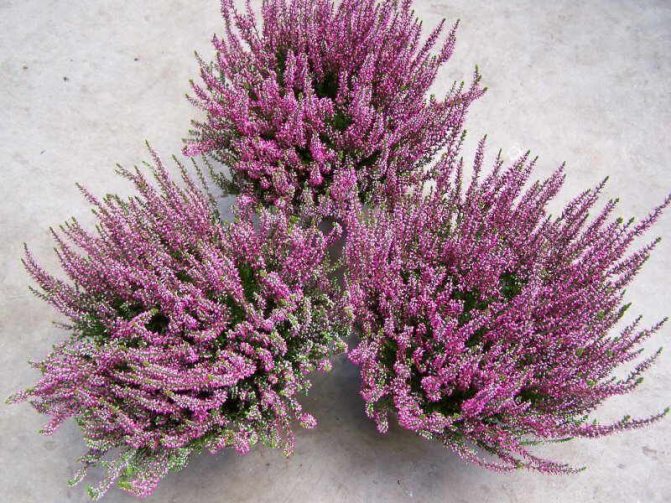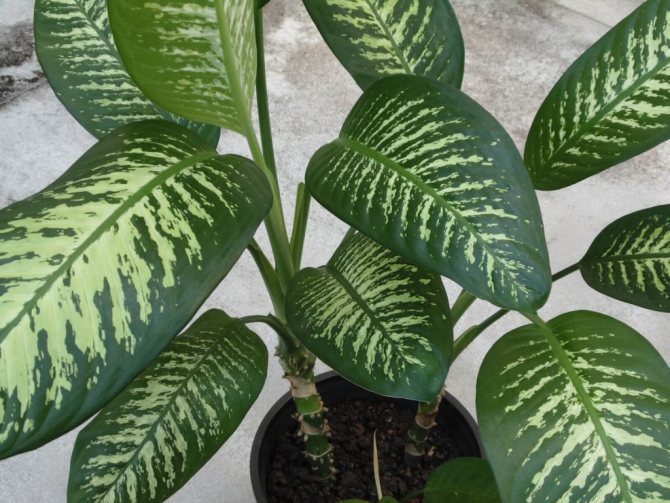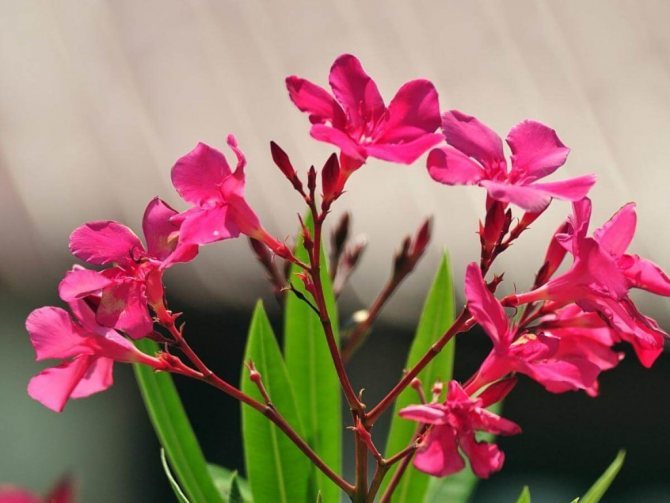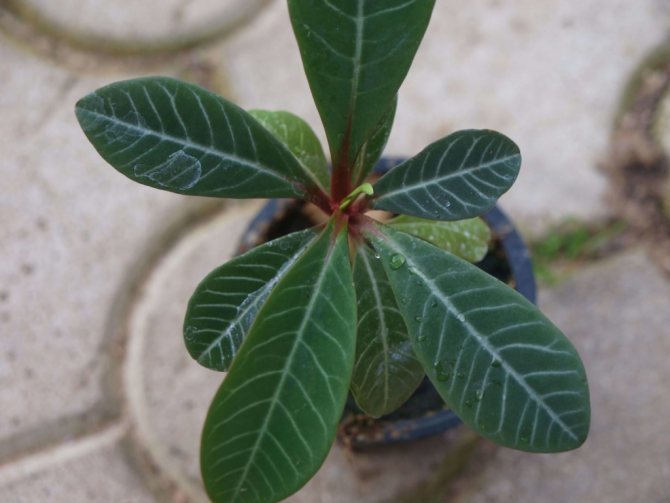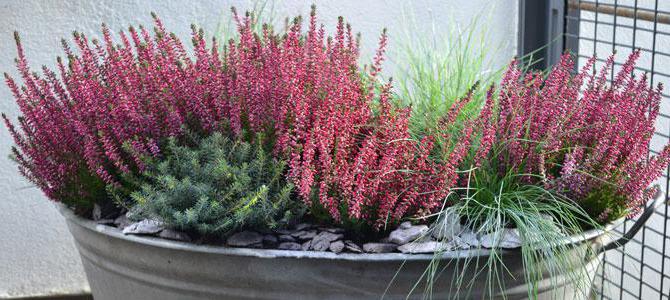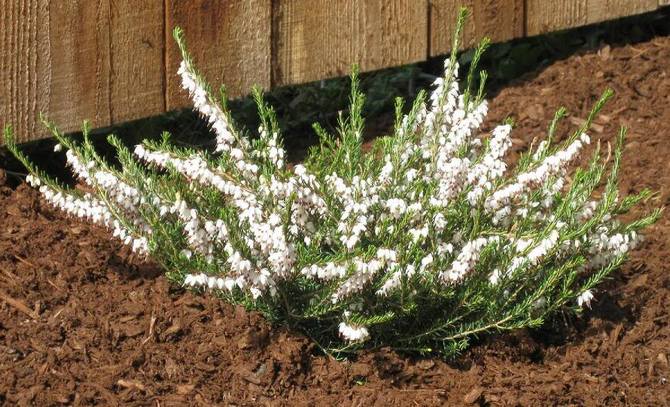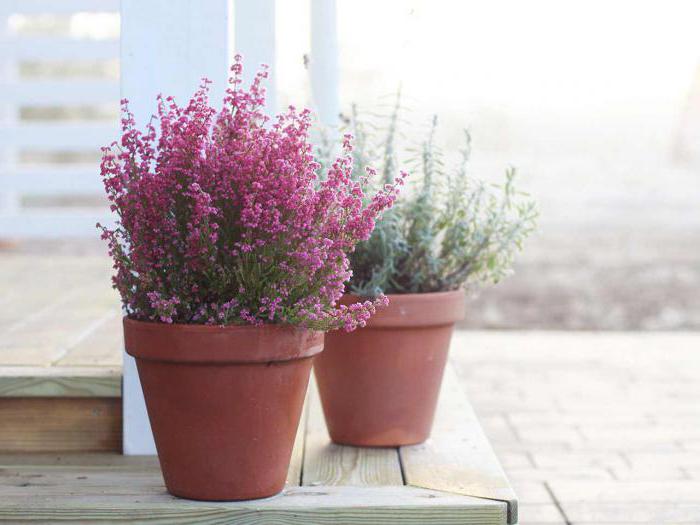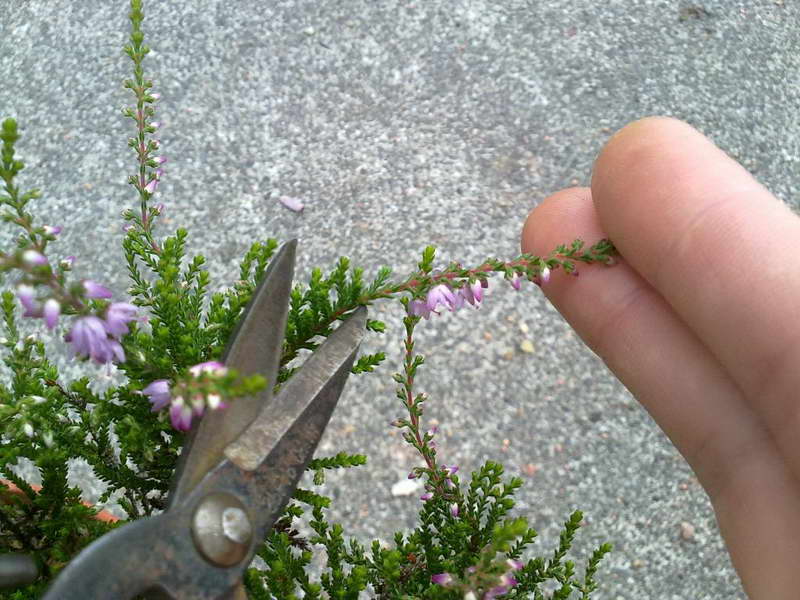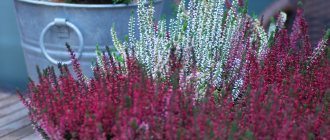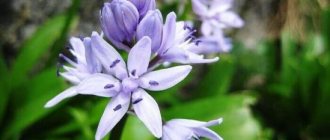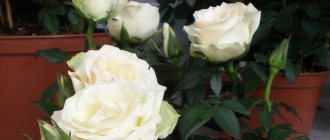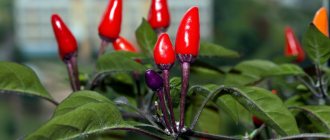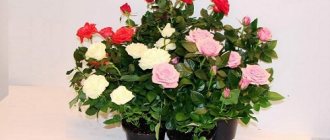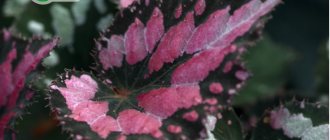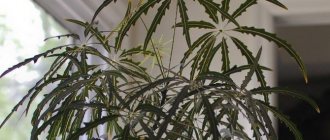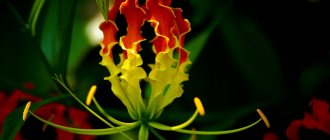Common heather, an evergreen plant, belongs to the Heather family. The botanical term itself means a stunted perennial plant that lacks a main stem. Heather has branching stems, leaves are triangular, small, without petioles. Small flowers, from 5 to 30, are collected in a brush. The flowers are lilac-pink.
Heather ̶ honey plant. In nature, it grows in swampy peatlands, in pine forests. It is believed that the origin of heather comes from Asia, but its modern range is much wider. In our climatic conditions, it can be grown outdoors. Heather will decorate any garden, because this plant is decorative, fragrant, and, moreover, does not require particularly difficult care.
Varietal variety
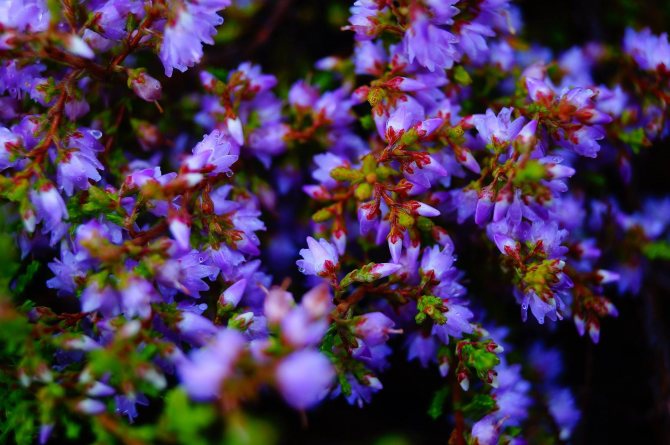
Common heather is the only natural species of the Heather family. But in gardens and parks, various varieties of this plant, obtained through selection work, are now growing. Varietal heathers differ from their ancestor in greater decorativeness, a variety of shades of inflorescences and leaves.
Unfortunately, hybrids lose their selectively obtained qualities when propagated naturally (by seeds). Therefore, for new plantings of varietal heather, the material is usually purchased in nurseries.
Heather varieties are classified according to plant height:
- tall (50 - 60 cm high),
- medium-sized (20 - 30 cm high),
- dwarf (creeping, no more than 10 cm in height).
Another classification takes into account the color of leaves and inflorescences:
- with green leaf color (Long White, Darkness, Marleen),
- with a silvery leaf color (Silver Knight, Glendoik Silver, Jan Dekker),
- with golden leaves (Aurea, Orange Queen),
- with double flowers (Beale, Alba Plena),
- with non-opening flowers (Minima, Fritz Kircher, David Eason).
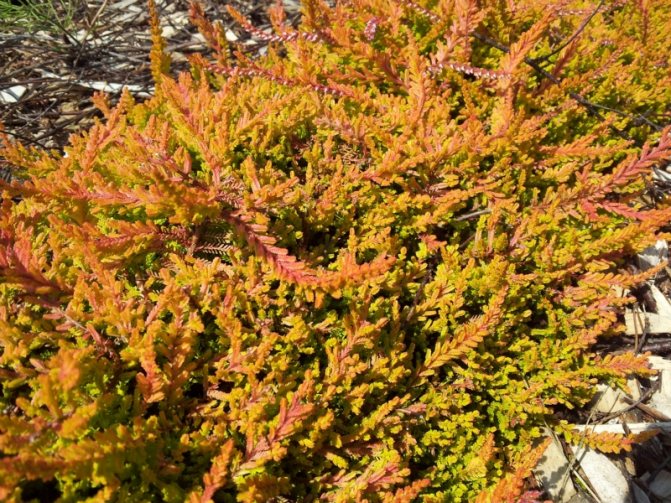

Orange queen ̶ tall variety, blooms from August to winter with long inflorescences of white-pink flowers. The leaves are green in summer and turn orange from the end of August. Differs in frost resistance.
Glendoik Silver ̶ medium-sized variety, blooms in September-October with lilac-purple long inflorescences. Branches are deflected with silvery leaves.
Minima ̶ dwarf variety, blooms in late summer with short clusters of non-opening bright pink flowers. The leaves are green in summer and brown in winter.
Varieties for home cultivation
In indoor conditions, only three varieties of this medicinal and highly decorative shrub are planted:
- Heather is slender. The plant stands out for its beautiful appearance, its height is up to 40 cm. The leaf plates are distinguished by a rich light green color, they have pubescence. At the flowering stage, heather attracts attention with its pink-red or purple bells, very similar to pomegranate seeds.
- Wintering heather. Its height is 50 cm, the leaf plates are quite large, the flowers are white in color.
- Heather mix. On the territory of Russia, wintering heather and mix are found in home floriculture much more often than slender. The height of the shrub is 40-50 cm, its highly branched stems are covered with scaly leaf plates. The flowering phase occurs in July, the brushes are composed of pink, purple and white bells.
Landing conditions and procedure
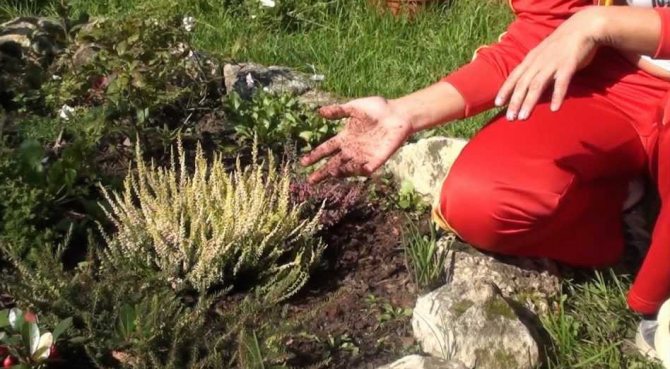

For better survival, it is recommended to plant heather in open ground in the second half of spring, from about the end or mid-April. Over the summer, the plant will get stronger, and it will be easier for it to survive the winter cold. But if necessary, planting can be carried out in October.
Seat selection
For planting, a place well-lit by the sun is chosen. There should be no tall, spreading trees or other objects casting a dense shadow nearby.Slight shading during daylight hours is allowed.
The soil
Heather loves acidic soils - with a pH ranging from 3.5 to 5.5. Therefore, if the soil on the site is alkaline or even neutral, it must be acidified, and the first time to do this before planting heather.
You can acidify the soil with the following substances:
- sour peat (it is brown),
- rotted sheet compost,
- rotted needles,
- colloidal sulfur,
- ferrous sulfate.
There are no other requirements for the nature of the soil. Even sandy, very poor soils are suitable for heather. Clay soils are also suitable, provided that when planting, drainage from a layer of pebbles or rubble will be arranged under each plant.
Requirements for seedlings
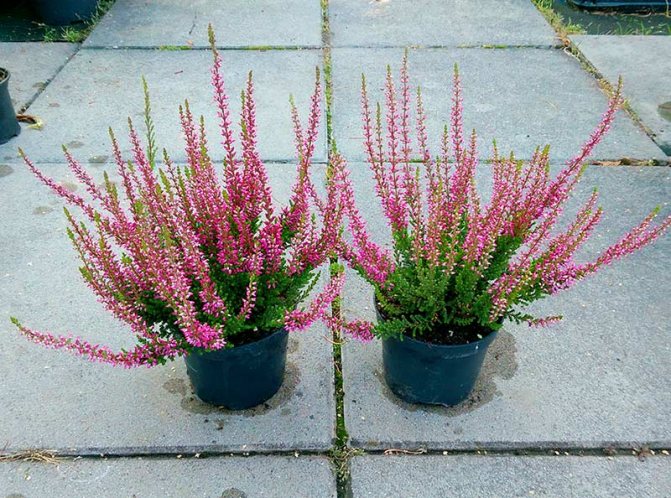

You need to purchase heather for planting in containers so that the root system is located in an earthen coma. The roots of even very young plants have already formed a symbiosis with mycelium - mycorrhiza. If it is not transplanted with the plant, it will most likely not take root in its new location.
The soil in the container should be slightly damp, and the heather itself should have both old branches and young, fresh ones.
Care features
When growing plants should be borne in mind that its roots are short and cannot extract water from the depths of the soil. Therefore, in dry weather without precipitation, it is necessary to ensure that the soil is always slightly moist. Water the bush with acidified water. It helps to keep moisture very well and protects the soil from overheating the mulch.
When caring for heath watering produced once every 10-14 days, after which the soil is loosened. In hot weather, it is recommended to spray the bushes, as they suffer greatly from dry air.
Top dressing... Mineral fertilizers are scattered around the bushes every spring. This must be done so that the granules or powders do not fall on the leaves, otherwise they may get burned. Each adult plant will need one and a half to two table boats of fertilizer. The scattered granules are embedded in mulch, which is watered abundantly.
Pruning heather... When growing heather in the third year of life, the bushes will need to be cut off. Further pruning is done every spring. During cutting with one hand, the inflorescence is held by the top, and with the other, 1/2 or 2/3 of the branch, which is located under the inflorescence, is cut off. In this case, you need to maintain the shape of the crown. Thanks to such pruning, the bush will give new branches next year, on which even more beautiful flowers will bloom.
How to plant?
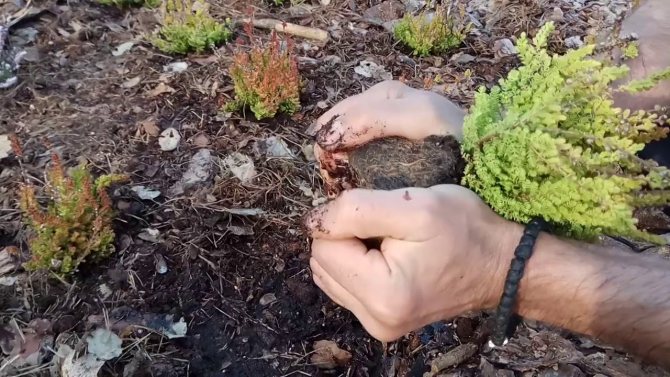

The planting hole should match the size of the earthy clod around the roots. The free space is filled with soil. The root collar is positioned flush with the soil surface. The earth is tamped, mulched with peat and watered. You can immediately fertilize, you can do it after a while.
When planting, the distance between plants should be no closer than half a meter.
Watering and loosening the soil
Watering should be regular, but not excessive. In conditions of too dry soil, heather, as an unpretentious plant, will survive, but it will bloom poorly. On hot days, it is advisable to spray the stems and leaves with water. From September, when many varieties of heather are still in bloom, it is recommended to stop watering. The soil must be periodically loosened, but carefully so as not to damage the small roots.
Pruning
From the first year after planting, branches should be cut in autumn or spring. In young specimens, the upper branches are shortened, but by no more than 5 cm. In plants that have already bloomed, faded inflorescences need to be cut off.
When pruning, make sure not to remove the flower buds, which are located near the edges of the shoots in the heather.
Top dressing
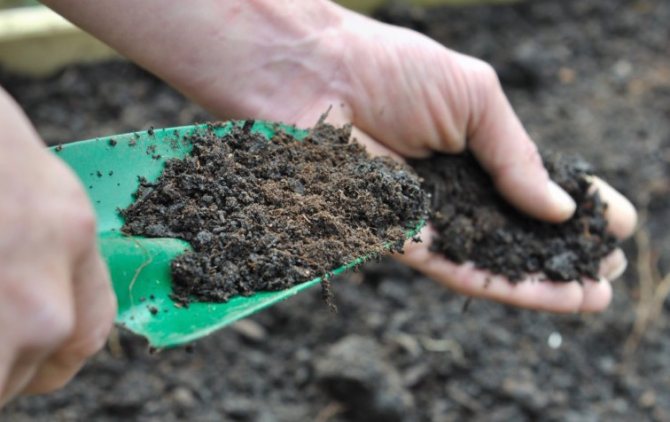

It is enough to feed the heather once a year, usually in the spring, in mid-May. Root feeding is carried out using either liquid or granular fertilizers. Pre-watering is required before any fertilization is applied.It is best to use acidic fertilizers for hydrangeas and rhododendrons. Many people recommend Kemira Kombi and Kemira Lux fertilizers.
Any complex fertilizers are also suitable, which include, in addition to nitrogen, phosphorus and potassium, also microelements. But before their introduction, the land under the plantings is preliminarily acidified with peat.
From organic fertilizers for heather, we use rotted compost. The introduction of fresh organic fertilizers will ruin the planting. The calculation of the fertilizer dose is carried out according to the instructions attached to the fertilizer. An excess of fertilizer for heather is harmful: the plants become less resistant to diseases. At the same time, adequate annual feeding stimulates plant growth and promotes more abundant flowering.
Some agronomists recommend another top dressing, in the middle of summer. It is performed if the growth of flowering shoots is slowed down. For this case, any drugs that do not contain nitrogen, for example, potassium phosphate, are suitable.
Feng Shui
In Feng Shui, it is important to pay attention not only to the type of flower, but also to the state in which it is. There are several basic rules for keeping flowers and plants in the house according to Feng Shui:
- You should not keep dried flowers in the apartment.
- All old plants that no longer bloom and do not give young shoots should be thrown away.
- Sick flowers should not be kept in the house, as they will take away your health.
- A flower that you take care of for a long time, but all actions are useless, and it withers, should also be removed from the house. The plant spreads negative energy.
- It is worth choosing those flowers whose leaves are directed upwards. According to Feng Shui, such plants bring positive energy to the house. Plants with leaves that stretch down, on the contrary, land it.
- It is better to choose flowers with a rounded leaf shape.
- You shouldn't have a lot of plants in the bedroom and next to the bed.
- According to Feng Shui, all plants are divided into female and male (Yin and Yang). Women include begonia, violet, fat woman, cyclamen. Citrus fruits, dracaena, chlorophytum and others are considered male plants.
- For the most favorable energy field in the house, it is necessary to keep Yin and Yang plants.
Preparing for winter
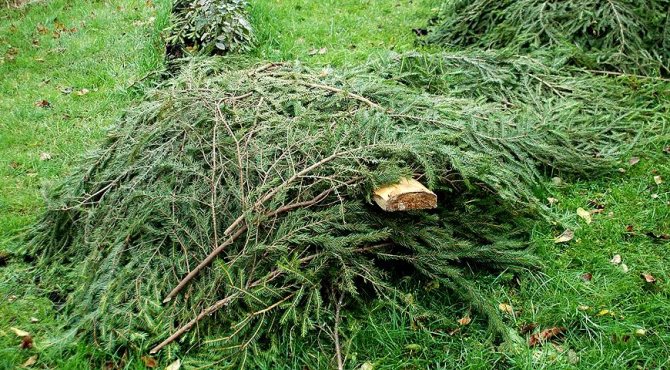

In order for heather to survive even a fierce winter, it should be prepared for the onset of frost. Pre-winter care consists of the construction of a double shelter. Usually, heather warming is carried out in late October or early November, while the soil is still not frozen.
First, the soil under each plant is well sprinkled with a layer of peat or some kind of non-woven material to cover the plants (in extreme cases, you can use dry leaves). It is recommended to make a layer of at least 10 cm. Then the bushes are covered with spruce branches. Around the middle of April, the spruce branches are removed, and the root collars of each specimen are freed from the peat.
Protection against diseases and pests
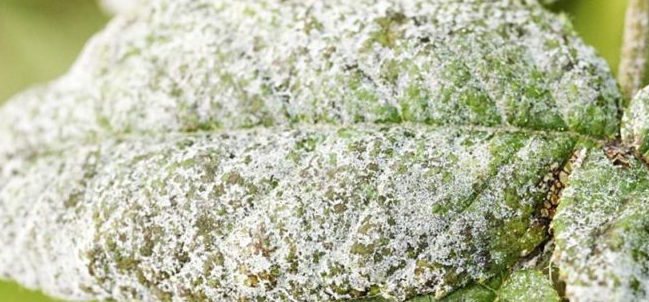

Leaf of a plant affected by powdery mildew
If heather grows in a place where there is no stagnation of moisture in the soil, it is rarely affected by disease. But with waterlogged soil, as well as with high air humidity, there is a high probability of being affected by fungal diseases - powdery mildew or late blight.
With powdery mildew, gray spots appear on the leaves and shoots, and subsequently the plant begins to dry out. To save the plant and prevent the defeat of other specimens, it is required to use fungicidal agents containing copper and sulfur (Topsin, Fundazol).
To protect against late blight, heather is recommended to be treated twice annually (late autumn and early spring) with a 1% solution of copper sulfate. If late blight nevertheless appears (gray bloom, leaf fall, shoot death), copper sulfate is used for medicinal purposes. Pre-affected plant parts are removed. Copper sulfate is treated three times at ten-day intervals.
Of the pests, the scabbard usually attacks the heather.They are struggling with it by thoroughly washing the stems and leaves with a solution of soap or spraying with insecticides with a wide spectrum of action.
The main preventive measure to protect heather from diseases and pests is proper care of its plantings.
How can heather propagate
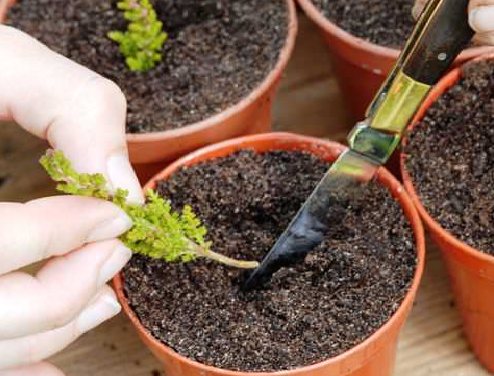

In nature, heather is most often propagated by seeds, and less often by layering. In the garden, it is most convenient to propagate heather in vegetative ways:
- layering,
- dividing the bush,
- apical cuttings.
For propagation by layering, the branch from which the leaves are removed in advance (except for the apical ones) is bent down. The middle part of the branch is fixed at the very surface of the soil, best of all in a small depression. Sprinkle with earth.
Subsequently, you need to water the rooting site more often, and over time, usually in the next summer season, you can break off the connection with the mother plant.
The division of the bush is performed at the end of summer. To do this, they dig it up and divide it by hand into two or three parts, certainly together with a lump of earth that has stuck to the roots. Each part is planted in separate new wells. In order for the division to be successful, and the new plants to take root well, the bush chosen for division can be prepared in advance. Preparation consists in covering the bush with a layer of peat, which strengthens the root system.
The most painstaking method is propagation by cuttings, which is used if you want to preserve the characteristics of the variety. At the end of summer, good, strong, but not flowering shoots are cut off and, after treatment with a growth stimulant, they are rooted in flower pots. To do this, take soil containing peat and sand. The shoots should survive the winter at around 18 degrees. They can sometimes be fed with urea. The soil is moderately moistened. In the spring, new plants will be ready to be planted in the garden.
If desired, it is possible to propagate heather by seeds. Then the time from sowing seeds to planting young plants in open ground will take about two years.
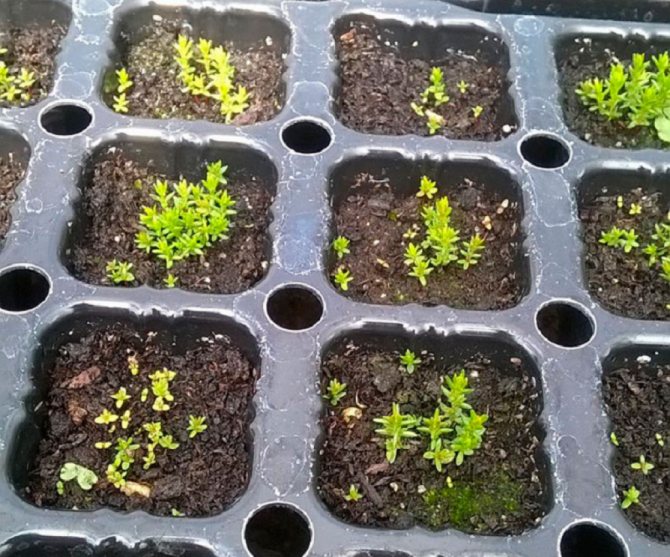

The seeds of heather are very small, and when sowing, they are simply laid out on the surface of the moistened soil. The most crucial stage is to achieve germination. This takes about a month. All this time, it is necessary to maintain a greenhouse regime: containers with soil and sown seeds are kept under the film, but also ventilated so that a lot of moisture does not accumulate under the film.
Over time, the plants are planted in flower pots. Caring for them consists in maintaining moderate soil moisture, providing good illumination and feeding. In the first summer of their development, new plants are not yet suitable for planting in the ground, but they can already be taken out in pots to the open air. And only by the second summer season they will be strong enough for planting in the garden. Unfortunately, with all the laboriousness of this method, the new plants do not retain the characteristics of the parent variety.
Breeding methods
In total, there are four main ways of reproduction of heather.
Taps
To reproduce heather with branches, you need to dig a shallow hole next to one of the bushes, then free one of the lower stems from the leaf plates and dig it into this hole. Then fix the branch with a wire or hairpin, lift the upper part of the stem and tie it to the support. Water the planting with warm water. Once the branch is rooted (after a few weeks), you can cut it off from the mother bush and transplant.
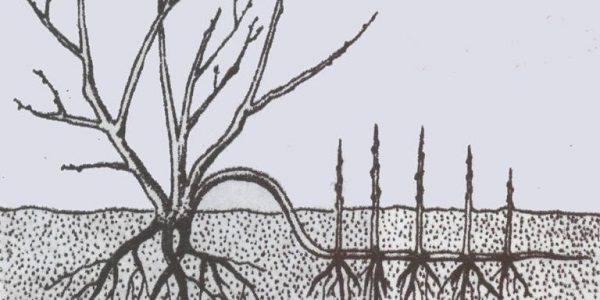

Cuttings
Cut the cuttings from the already stiff stems in the last days of August, treat with a root formation stimulant (Kornevin, Epin or Zircon). It is important to ensure that there are no shoots on the branches. Plant the resulting cuttings in a container with soil and peat. Water the planting, add a little superphosphate and urea.
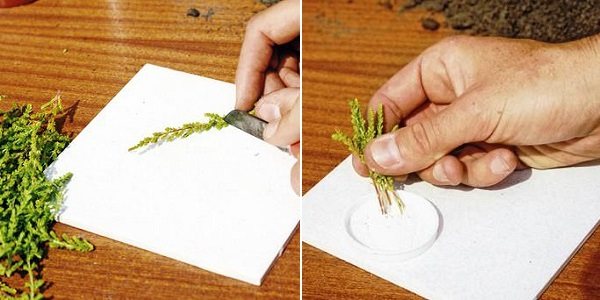

Saplings
The method of propagation by seedlings is described in detail in the previous paragraphs.
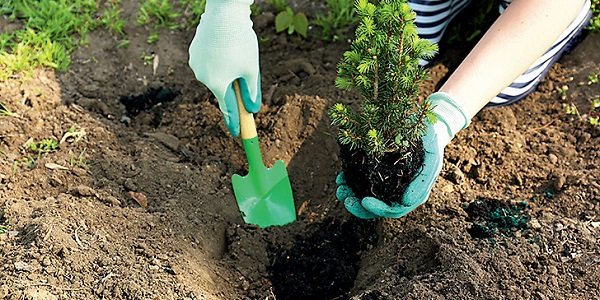

By dividing
This method is suitable for propagation of shrubs at the end of the summer period (about 2 weeks before the beginning of September).Dig up the desired bush, get it out of the ground. Cut off dying shoots and divide the rhizome into several parts. Place each cut root in earthen holes and pour water over it.
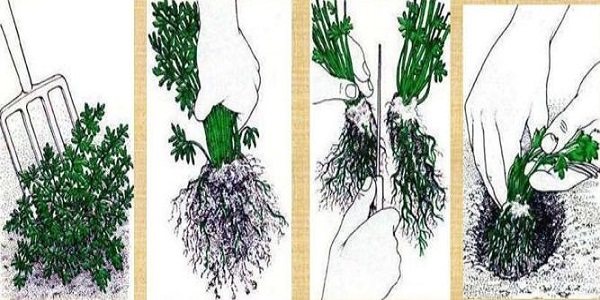

Heather in landscape design
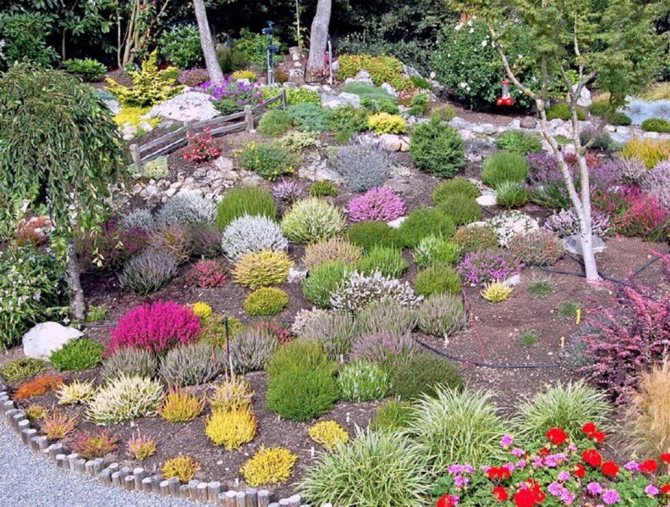

It is known how picturesque heather wastelands look - vast thickets of heather in association with other plants. Decorative, unique aroma, as well as unpretentiousness of heather make it an excellent material for creating artificial landscape compositions.
Heather is very suitable for decorating uneven surfaces, such as ledges, hills. Dense plantings surrounding large stones look very beautiful (both on an alpine slide and in rockeries, on a lawn or lawn).
Plants with which it is customary to plant heather in landscape compositions are ferns, rhododendrons, bushes with bright berries, groups of low deciduous trees, small conifers. Various sizes of compositions are acceptable, from small to gigantic.
The heather multicolored mix is beautiful on its own, even when the color spots are scattered randomly. It is more difficult to create landscape compositions with intricate patterns of heather with inflorescences of various shades, but with the modern abundance of varieties, this is possible.
Main types and varieties with photos and names
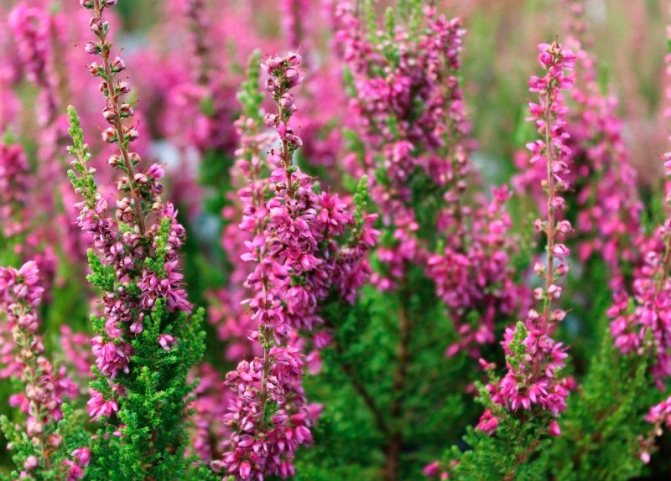

Common heather
Common heather (Calluna vulgaris) - this is the only species in the genus. Erica is often considered heather, which is closely related to this plant. However, heather and erica are different plants. The common heather has a huge number of excellent varieties, currently there are about 500 of them. Gardeners divide all of these varieties into 6 different groups.
1 group. Varieties with green foliage
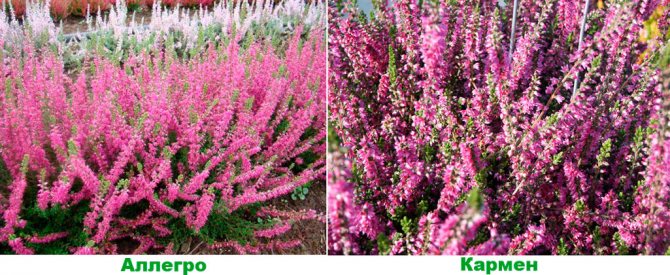

- Allegro... The height of this evergreen shrub is about 0.6 m, and its crown has a diameter of about 0.5 m. There is a compact, rather dense crown, dark brown bark and scaly leaf plates of a dark green color. Flowering is observed from the last days of July to the end of October. Red-carmine flowers are simple glossy, they are collected in long inflorescences. The plant is winter-hardy, only young bushes need to be covered for wintering.
- Carmen. This hybrid variety, bred in Holland, is very popular in European countries. The bush reaches 0.3–0.4 m in height, has a rounded crown, small dark green leaves, dark brown bark, simple pinkish-purple flowers, which are collected in peduncles (up to 10 centimeters long). Hardy, but needs shelter during the winter.
Also popular are such varieties as: Radnor, Duckness, Ross Hutton, Mazurka, Marco, Barnett Anley, Hookstone, etc.
Group 2. Varieties with white flowers and green leaf plates
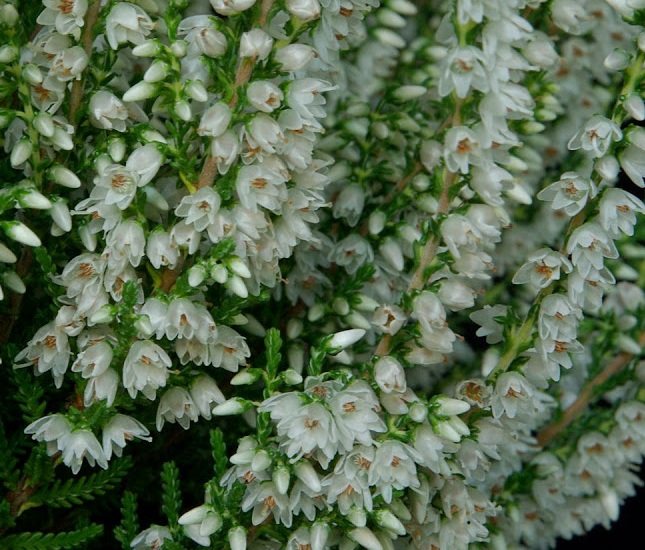

Alba
- Alba... The height of the erect bush is about 0.4 m, while the crown has a diameter of about 0.55 m. On the ascending branches are rich green leaf plates. White flowers are collected in dense racemose inflorescences.
- Alexandra... The spherical bushes reach 0.3 m in height, while the crown diameter is 0.4 m. The leaf plates are dark green in color, and the flowers are pale cream, while by the end of flowering they turn dark red.
Also popular are such varieties as: White Lone, Humpty Dumpty, Long White, Alec Martin, Alba Jay, etc.
Group 3. Varieties with silvery foliage
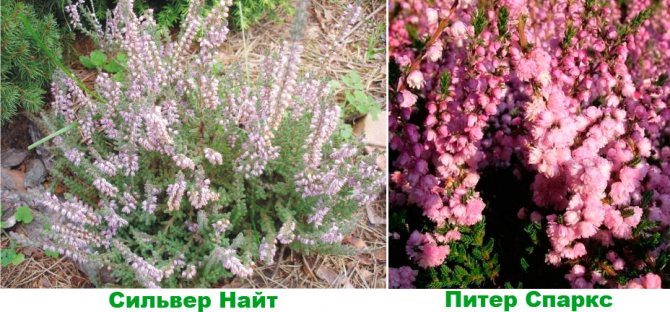

- Silver Knight... This variety is bred in England. The height of the bush is about 0.3 m, and the diameter of the compact cushion crown is 0.45 m. The bark is dark brown, grayish-silvery leaf plates are pubescent. In winter, the leaves turn burgundy. Simple lavender or lilac flowers are collected in inflorescences with a length of 20 centimeters. It is resistant to cold, but it needs to be covered for the winter.
- Peter Sparks... The variety is also obtained in England. The height of the bush is about 0.5 m, and the diameter of its oval crown is 0.6 m.The bark is dark brown, small scaly leaves are dark green in the summer-autumn period, and greenish-gray in the winter-spring period. Terry dark pink flowers are part of inflorescences, the length of which is 0.3 m. Possesses moderate frost resistance.
Also popular are such varieties as: Annmarie, Velvet Fashion, Jan Decker, Glendwick Silver, etc.
4 group. Varieties with golden foliage
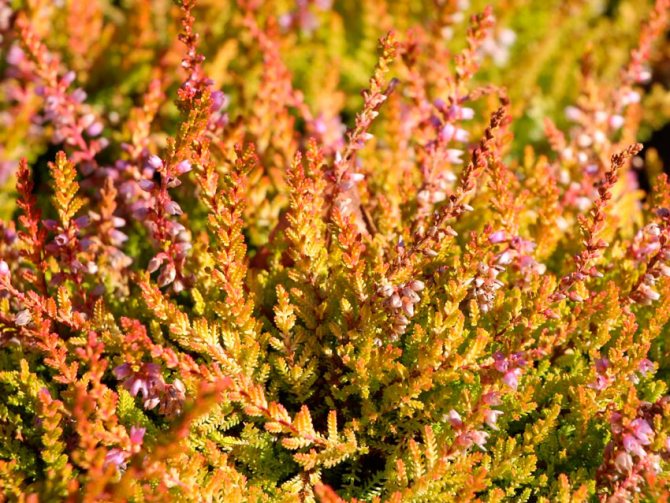

Boskup
- Andrew Proudley... The bush reaches a height of 15 centimeters, while the diameter of its crown is about 25 centimeters. The broad ascending branches are rather thin. In the warm season, the foliage is orange and has light yellow tips, and in the winter it turns bronze. Small pink flowers are part of loose inflorescences.
- Boskup... The variety was created in Holland. The bush reaches a height of 0.4 m, and the diameter of its compact crown is 0.5 m. The bark is dark brown. In summer, the leaf plates are greenish-yellow, and in autumn they turn reddish-copper. Simple lilac-pink flowers are part of short, low-branched inflorescences, which reach about 10 centimeters in length. Possesses moderate frost resistance.
Other popular varieties are: Aura, Arran Gold, Blazeway, Crimson Sunset, Gold Hayes, Cottswood Gold, etc.
5 group. Varieties with double flowers
- Autumn Glow... The height of the spreading shrub is about 0.3 m, and the diameter of its crown is about 0.45 m. The ends of the branches are raised. Dark green leafy plates, lavender densely double flowers are part of short, rather dense racemose inflorescences.
- Monica... The height of the broadly spreading shrub is 0.55 m, and the diameter of its crown is 0.8 m. The broad ascending branches are very strong. Dark green leafy plates acquire a grayish bloom in winter. Double reddish-pink flowers are very large, collected in dense racemose inflorescences.
Also popular are such varieties as: Red Favorite, Dark Star, Alba Plena, Joan Sparks, County Viclow.
6 group. Varieties with non-expanding flowers
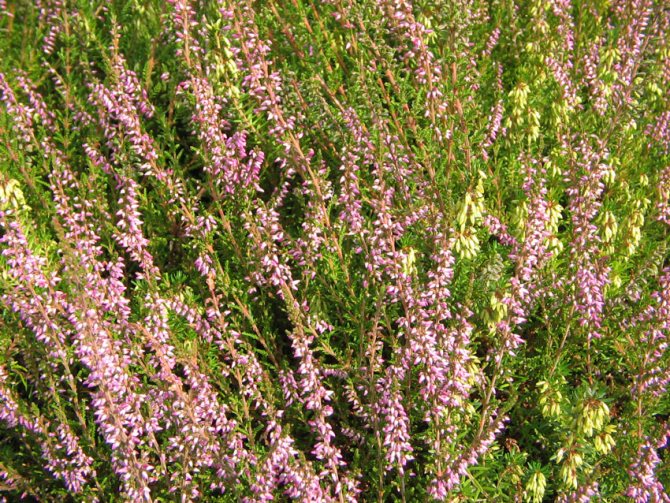

Marlin
- David Eason... The height of the spherical bush is about 20 centimeters, and the diameter of its crown is 25 centimeters. There are a large number of ascending branches. The leaf plates are dark green. Lilac-pink dark flowers are part of the short brushes.
- Marlin... German variety. The bush reaches a height of about 0.3 m, and its crown diameter is 0.5 m. Dark brown bark, small dark green leaf plates. Mauve or deep purple buds never open.
Also popular are such varieties as: Romina, Minima, Fritz Kircher.

